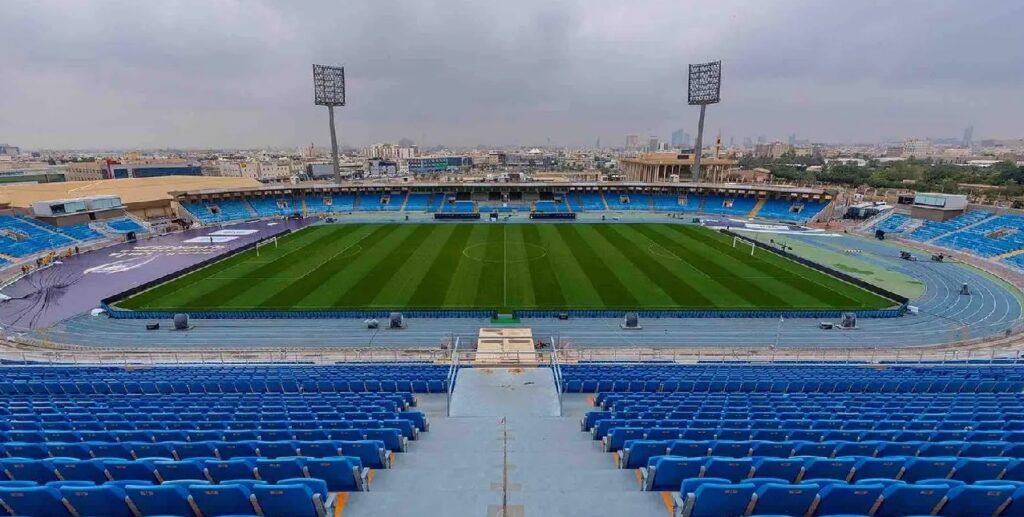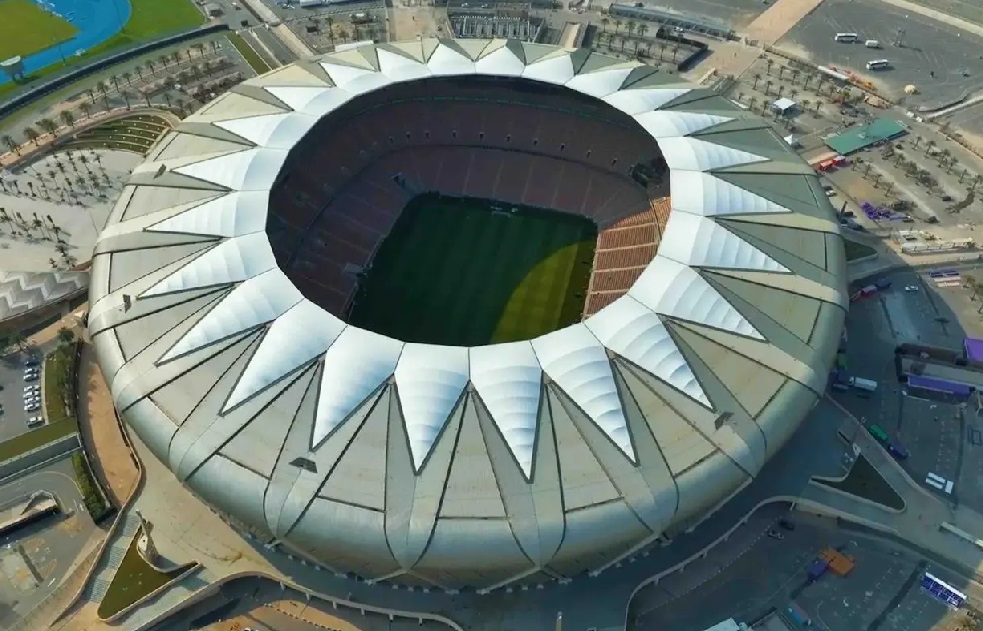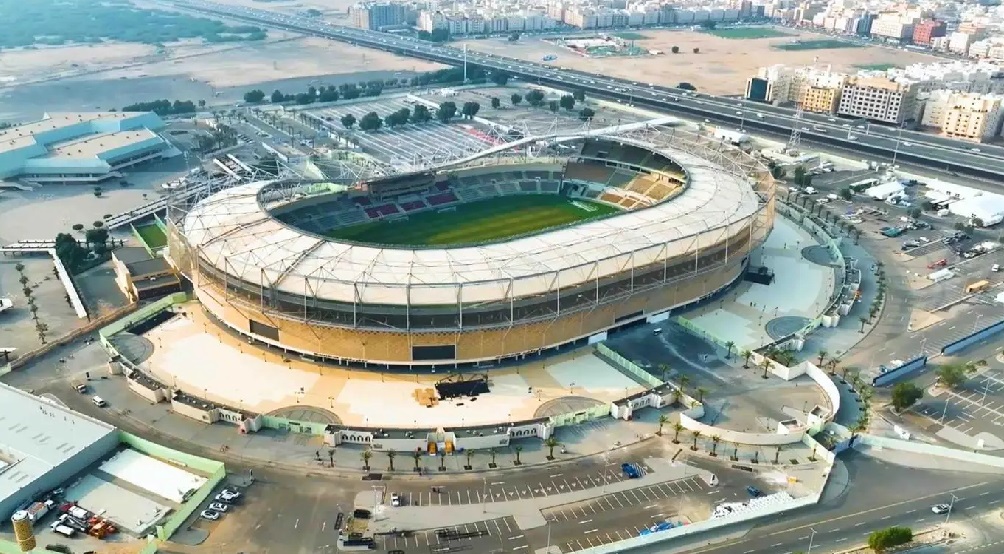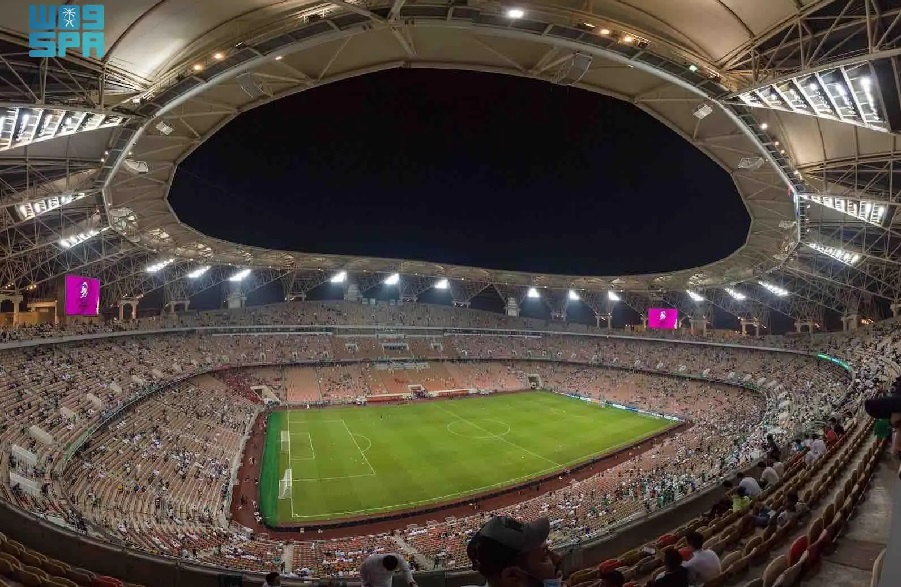RIYADH: As the world watches, Saudi Arabia is transforming from a football spectator to a potential global hosting powerhouse. The 2034 World Cup bid represents more than a sporting event – it’s a statement of national ambition, technological capability, and international engagement. The beautiful game is about to witness a beautiful transformation.
In a remarkable testament to its sporting ambitions, the Kingdom has positioned itself as a potentially groundbreaking host for the FIFA World Cup 2034, setting a historic precedent in global football infrastructure development.
Fédération Internationale de Football Association’s (FIFA) recent evaluation report has catapulted Saudi Arabia’s World Cup bid into the global spotlight, awarding an unprecedented technical score of 419.8 out of 500 – the highest in World Cup hosting history. This extraordinary achievement is not merely a statistic but a powerful narrative of the Kingdom’s transformative vision in sports.


From Local Grounds to World-Class Venues
The Kingdom’s stadium infrastructure tells a compelling story of rapid evolution. Take the iconic King Fahd Sports City Stadium, a 68,000-seat marvel that has already hosted international tournaments like the FIFA World Youth Cup and multiple FIFA Confederations Cups. Similarly, the King Abdullah International Stadium in Jeddah, a “shining jewel” capable of hosting over 62,000 spectators, has proven its mettle by staging prestigious events like the 2023 Club World Cup.
Top Football Stadiums in Saudi Arabia:
> Prince Faisal bin Fahd Sports City Stadium (Riyadh): Over 20,000 seats
> King Fahd Sports City Stadium: 68,000 seats with international event history
> King Abdullah International Stadium (Jeddah): 62,000 seats, host of major international tournaments
> Prince Mohammed bin Fahd Stadium (Dammam): 36,000 seats, being upgraded for 2027 AFC Asian Cup
This stadium development is not happening in isolation. It’s intricately woven into Saudi Arabia’s ambitious Vision 2030, a comprehensive strategy to diversify the economy and develop public service sectors, with sports playing a pivotal role.
A Global Sporting Destination
The tireless efforts of the Ministry of Sport and the Saudi Football Federation extends beyond infrastructure. The Kingdom is strategically preparing for consecutive major tournaments – the 2027 AFC Asian Cup and the 2034 FIFA World Cup – signaling a long-term commitment to becoming a global sporting destination.
FIFA‘s unprecedented technical score isn’t just a number; it’s a global endorsement of Saudi Arabia’s sporting potential. The evaluation reflects not just physical infrastructure but also the Kingdom’s comprehensive approach to hosting international sporting events.


Here is the complete list of 20 sports cities in various regions and governorates of Saudi Arabia:
1- King Fahd Sports City Stadium in Riyadh.
2- Prince Faisal bin Fahd Sports City, commonly referred to as “Al-Malaz Stadium” in Riyadh.
3- King Abdullah Sports City Stadium in Jeddah, “the Shining Jewel”.
4- Prince Abdullah Al-Faisal City in Jeddah, known to football fans as “Youth Care Stadium”.
5- King Abdulaziz Sports City in Al-Sharaie, Makkah.
6- Prince Mohammed bin Abdulaziz Sports City in Madinah.
7- King Abdullah Sports City in Qassim.
8- Prince Abdulaziz bin Musaed Sports City in Hail.
9- Al-Majma’ah Sports City in Al-Majma’ah.
10- Prince Sultan Sports City in Abha.


11- Prince Abdullah bin Jalawi Sports City in Al-Ahsa.
12- Prince Saud bin Jalawi Sports City in Al-Khobar (Al-Rakah Stadium).
13- Prince Hazlul Sports City in Najran.
14- King Faisal Sports City in Jazan.
15- Prince Nasser Sports City in Wadi Al-Dawasir.
16- King Khalid Sports City in Tabuk.
17- Prince Nayef Sports City in Qatif.
18- King Saud Sports City in Al-Baha.
19- King Fahd Sports City in Taif.
20- Prince Abdullah bin Musaed Sports City in Arar.




